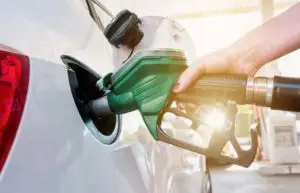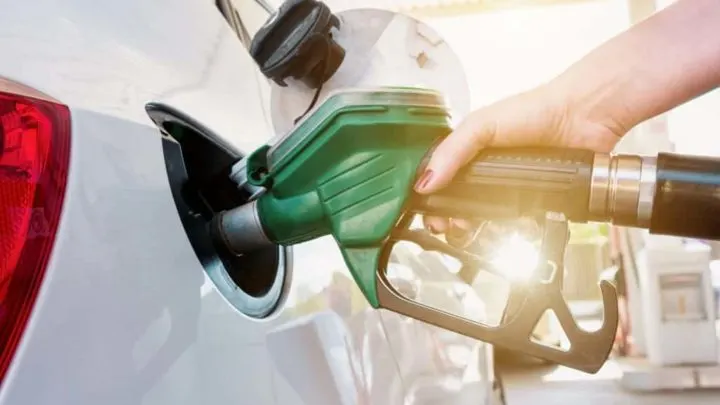Gas money is the bane of every low income budget. When you are pinching pennies, the last thing you want to do is dump dollars into your gas tank. If fuel is burning up your budget, you need to know these 15 steps to saving gas money.
Save Gas Money with these Buying Tips!
1. Do not buy gas on the weekend! Fill up Monday to save gas money.
Do not buy gas on Friday, Saturday or Sunday! In fact, don’t fill up after 10am Thursday. Chris Faulkner, CEO and President of Breitling Oil and Gas, states that “gas prices rise on Thursdays in anticipation of weekend travel” and “10 am is when most station owners make their price change for the day.” Avoid holidays, too!
GasBuddy analyzed three years worth of fuel price data and discovered that Monday is the best day to purchase gas. Thursday is the worst. According to the data, “if every U.S. motorist bought gasoline on Thursday for an entire year, they’d collectively spend an extra $1.1 billion versus filling up on Monday – the lowest priced day of the week.”
2. Buy gasoline early in the day.
Filling up early in the morning can have a small impact on your gas money savings. However, it’s not nearly as important as the day that you choose to fill up.
Gasoline expands or contracts up to 1% for every 15-degree change in the fuel’s temperature. Most gasoline is stored in double-walled underground containers that maintain a steady temperature regardless of the outside air. However, the first few gallons pumped have been sitting in the pump dispenser which can be warmed by the sun. Pumping early in the day will ensure that the gasoline in the pump dispenser is still cool which ensures that you get more gas for your money.
While some sources, such as Snopes and Consumer Reports, question the impact of gassing up early in the morning, their assumptions are based on the average savings when someone fills their tank completely. I know many low income families can only buy a few gallons at a time so even saving a few cents per gallon can be significant.
3. Use an app to find the best price.
GasBuddy is an excellent app that maps nearby gas stations and allows you to sort by price and location. It’s a free app that works on iPhone, Android and Windows phones!
AAA TripTik will help you find the cheapest gas prices and will help you plan a route that uses the least amount of gas! It is only available on Apple devices.
Usually, your gas money is most efficient at gas stations that are not right off the freeway. At those stations, you’ll pay an extra $0.15 or so for the convenience.
4. Carry cash to get the best price.
Many gas stations offer cheaper prices for cash buyers because they don’t have to pay costly credit card processing fees.

Adjust your driving habits to save gas money.
5. Drive sensibly, not aggressively, to save gas money.
Accelerate slowly, drive at a reasonable speed and avoid hard braking in your vehicle. Aggressive driving habits can reduce your highway gas mileage by up to 33% and your city mileage by 5%! That’s a huge loss.
6. Choose the route with the fewest stops.
Fuel economy isn’t all about the miles you drive. Vehicles have separate freeway and city fuel estimates because frequent stops in the city drag down fuel economy.
Accelerating from a full stop is the biggest drain on your fuel economy. Traffic lights and congestion can drastically lower your fuel economy. The best route isn’t always the shortest one; for fuel economy, it’s often the one with the fewest stops.
7. Stay close to 50 mph.
The Department of Energy states that gas mileage drops rapidly after 50 miles per hour. In fact, you’re basically paying an extra $0.19 per gallon for every 5 mph over 50 mph. Stay close to 50 mph while driving to save the most gas money.
8. Use cruise control on flat roads. Do not use cruise control on hilly terrain!
Cruise control can save you gas money. In fact, Edmonds.com estimates that cruise control can save an average of 7% on fuel usage!
However, cruise control can waste fuel when you use it in hilly terrain. When you’re going up and down hills, the system will downshift too frequently and waste gas. That costs you more gas money!
9. Avoid idling whenever possible.
The Department of Energy states that idling can use up to 1/4 gallon per hour! Chris Faulker warns, “If you’re going to be waiting for more than a minute, running your engine wastes more gas than restarting it.”
Although many people idle the car so it can warm up, “Car Talk” hosts Tom and Ray Magliozzi have stated that “the best way to warm up a car is by driving it at moderate speeds.” Unless it’s a particularly cold winter morning, you don’t really need to let that car idle before you drive.
10. Open windows at low speeds but use the air conditioning at high speeds.
Open the windows if you need to cool down at low speeds. However, if you are traveling at more than 30 miles per hour, open windows will cost you gas money. At high speeds, it’ll cost even more than running your air conditioning!
According to the Department of Energy, you will lose 5-25% of your fuel economy when your air conditioner is set to the Max setting. However, Edmonds.com states that this is not necessarily true in newer vehicles. If you’re driving an older model, try keeping the A/C off or set to lower settings to save gas money!
These car maintenance tricks can help you save gas money!
11. Keep your car as empty and light as possible.
The EPA estimates that every 100 pounds in your vehicle will increase your fuel usage by 1% to 2%. The difference is higher in smaller, lightweight vehicles than in heavier trucks and SUV vehicles.
The easiest way to reduce weight in the car is to clean it out! Remove any trash. Empty the trunk. Don’t carry things around longer than necessary.
12. Use that gas cap!
If your gas cap is missing or broken, it can reduce your fuel efficiency by 1% to 2%! The gas will literally evaporate out of your vehicle. The gas cap keeps those evaporates in your car, where they can eventually be used. No cap means those evaporates slip right out of the vehicle!
If your gas cap is missing or broken, they are easy and affordable to replace. You can pick one up at an auto parts store for between $10-$20. If that’s too steep, you can grab one at a local pick-a-part junkyard for much cheaper.
13. Eliminate wind resistance.
You’ll save gas money by removing that rooftop carrier or even just the racks that hold them. In addition to removing unnecessary weight, you’ll also reduce wind resistance!
The Department of Energy estimates that rooftop carriers will reduce your fuel economy by up to 8 percent in city driving and up to 25 percent on the interstate! That’s a huge loss. If possible, store everything inside your vehicle. If necessary, use a rear-mount cargo box or tray that will only reduce your fuel economy by up to 5 percent.
14. Keep your tires properly inflated to save gas money!
Properly inflated tires last longer, are safer to use and even save you gas money! The Department of Energy estimates you can increase your fuel economy by up to 3.3% just by keeping your tires properly inflated.
The ideal tire pressure should be listed on a sticker in the driver’s side door jamb or the glove box. It can also be found in your owner’s manual. Do not use the maximum pressure printed on the tire’s sidewall because it is not necessarily correct for your vehicle!
15. Fixing major vehicle maintenance issue can reduce your fuel usage by up to 40%!
Tuning the engine and providing regular maintenance can help you save some serious cash. A serious maintenance issue, such as a faulty oxygen sensor, can reduce your fuel economy by up to 40 percent! If you need help with auto repair, check out these helpful resources!
However, even minor vehicle maintenance measures can help you save gas money. Just changing a dirty air filter can improve your mileage by up to 10 percent! If you’re using the wrong motor oil, it can cost you 1 to 2 percent in gas mileage.
Make sure you are familiar with the owner’s manual for your vehicle and that you are providing proper maintenance to make sure you’re getting the most from your gas money (and ensuring your vehicle will last much longer).
Want to save even more money?!
How do you save gas money? Tell us in the comments!

